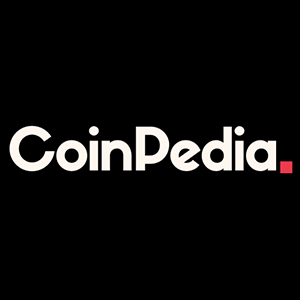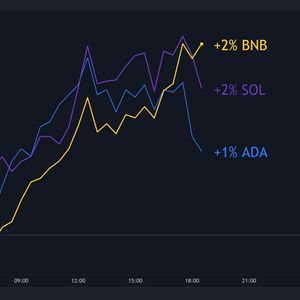Summary The Fidelity Crypto Industry and Digital Payments ETF offers focused exposure to cryptocurrency-related companies, but I believe there are better alternatives for investors interested in the crypto and blockchain space. While FDIG is one of the better-performing ETFs in its category, it suffers from a high expense ratio (0.39%) and a steep bid/ask spread (0.88%), making it an inefficient choice. For investors looking to outperform Bitcoin, I recommend MicroStrategy, which has historically outperformed during bull markets. For broader blockchain exposure, buy FDIG’s top 10 holdings directly. FDIG follows a stricter approach to selecting cryptocurrency-related companies, but the fund’s concentration in a few names, especially Bitcoin miners, raises questions about it as a tool to overperform the crypto market. I rate FDIG a “HOLD” for those who already own it due to tax and spread considerations, but recommend looking elsewhere for better exposure to the crypto and blockchain space. Thesis: there are better options than FDIG for investors interested in crypto and blockchain The Fidelity Crypto Industry and Digital Payments ETF ( FDIG ) was launched, along with several peers, during the 2021 Crypto bull market. I believe Fidelity introduced this fund to capitalize on the crypto-mania of the time. My belief is supported by the limited marketing material available for FDIG, as well as its relatively high expense ratio and bid/ask spread, at 0.39% and 0.88%, respectively. From an investor's perspective, I see little reason to choose this fund for exposure to the cryptocurrency and blockchain space. For investors looking to outperform Bitcoin and cryptocurrencies, I believe MicroStrategy Incorporated ( MSTR ) is a better option. Historically, MicroStrategy has outperformed Bitcoin during bull markets, benefits from a growing BTC per share metric, and doesn’t charge any fees, as I discussed in a recent article . On the other hand, investors seeking broader exposure to the cryptocurrency space might be better off purchasing some of FDIG's top 10 holdings directly. These holdings represent more than 50% of the fund at the time of writing and would allow investors to avoid the high expenses associated with FDIG. Overall, I rate this ETF a HOLD if it’s already in your portfolio, as selling it would create a taxable event and require going through the high bid/ask spread. However, investors interested in crypto and blockchain exposure should consider other options. FDIG ETF profile: this is not an efficient fund, in my view The FDIG ETF tracks the Fidelity Crypto Industry & Digital Payments Index. According to its issuer, this index is designed to: reflect the performance of global companies engaged in cryptocurrency, related blockchain technology and digital payments processing. The index operates with the following logic: It selects Crypto Industry stocks that derive at least 50% of their revenue from cryptocurrency and related blockchain technology activities. These companies will collectively make up at least 60% of the index's weight. It then selects the top 20 Digital Payments stocks, which must also derive at least 50% of their revenue from digital payments processing activities, based on average daily trading volume. Stocks are weighted according to their daily trading volume, adhering to diversification rules, and capped at the lesser of 22.5% of the index weight or the maximum weight that can support a $20M flow. Top 10 Holdings, FDIG (Seeking Alpha) Looking at the top 10 holdings of the FDIG ETF, I see names that I am sure will be familiar to readers that are interested in the cryptocurrency space. These include Coinbase Global ( COIN ) — the leading cryptocurrency exchange operating as an intermediary for most Bitcoin ETFs — and Bitcoin miners such as Marathon Digital Holdings ( MARA ), which I have covered in a recent article . With its top 10 holdings representing 53.52% of the ETF, I find this fund fairly concentrated, especially accounting for the fact that more than 25% of the holdings are either Bitcoin miners or crypto trading platforms. The ETF has a yearly expense ratio of 0.39%. I find this ratio reasonable given the somewhat exotic nature of this product. This is further confirmed by comparing FDIG’s expense ratio with competitive funds that I will cover in the next section of this article. However, in my view, a 0.39% expense ratio for a passive fund is too expensive in general, especially given how concentrated this ETF is. I will cover why I do not see passive funds as a good way to get exposed to crypto in the next sections. What I like the least about this ETF is its very high bid/ask spread, which currently sits at 0.88% according to Seeking Alpha data. This bid/ask spread is far higher than the Median of all ETFs reported by Seeking Alpha, at 0.15%. This is incredibly expensive when compared to the bid/ask spread of more liquid crypto ETFs such as the iShares Bitcoin Trust ETF (IBIT), at 0.03%. The high bid/ask spread is also the main reason why I believe this ETF is not an efficient way to get exposed to its underlying stocks. Having to pay close to 1% as a purchase fee in the form of bid/ask spread, as well as 0.39% per year to hold a somewhat concentrated fund is not efficient, in my view. The other reason why I do not like this ETF has to do with its index’s investment logic and underlying investment thesis, something I will cover later in this article, together with what, I think, are better alternatives for investors. FDIG: best option among a set of subpar funds I believe the FIDG ETF is part of a set of funds that were launched by issuers to capitalize on the cryptocurrency bull-run that took place in 2021. These are the Grayscale Future of Finance ETF ( GFOF ), the Global X Blockchain & Bitcoin Strategy ETF ( BITS ), the Amplify Transformational Data Sharing ETF ( BLOK ), the Bitwise Crypto Industry Innovators ETF ( BITQ ) and the iShares Blockchain and Tech ETF ( IBLC ). FDIG vs. peers, key figures (Author's elaboration of Seeking Alpha data) The table above summarizes key financial figures for each of these ETFs. By far, the largest and more liquid ETFs in the set are BLOK and BITQ. However, both of these ETFs have an expense ratio that is more than double that of FDIG. Given that an expense ratio is charged annually, and assuming investors in these illiquid funds are not engaging in frequent trading, I consider these funds sub-par. In other words, as an investor, I would prefer to pay a higher fee in the form of a bid/ask spread—incurred only once when buying and once when selling—rather than an expensive recurring yearly fee. These ETFs all share a common focus on investing in cryptocurrency-related companies, but they do not invest directly in cryptocurrency. The difference lies in how each fund defines “cryptocurrency-related” companies. Broadly speaking, there are two approaches these ETFs have taken: A strict approach, selecting only companies that generate the majority of their revenue from cryptocurrency-related activities. A more lax approach, including companies that are involved in or have committed to the blockchain and crypto space, but still derive most of their revenue and profit from other activities. FDIG follows the first, stricter approach. This is unlike the most liquid of its peers, BLOK, which features more variety in its top holdings. Among the top holdings of the BLOK ETF, we can find PayPal Holdings ( PYPL ), weighting 3.45% of the fund, as well as Block ( SQ ), with a weight of 3.33%. The difference in the investment universe is reflected in the performance of these ETFs in the past 3 years, outlined in the chart below. FDIG vs. peers, performance (Seeking Alpha) FDIG is the second best performing ETF of the set, after IBLC. I, personally, prefer the investment approach of FDIG against the more “lax” approach of products such as BLOK because I find the fact the ETF is more narrowly focused on the crypto space as an advantage. However, IBLC is over-performing while having a more lax approach, with PayPal and Mastercard ( MA ) in its top 10 holdings. I believe this indicates that either approach has its merits, but I still do not see a fundamental reason why an investor should be exposed to any of these ETFs. I will cover FDIG’s unconvincing investment thesis in the next section. An Unconvincing Investment Thesis: Better Alternatives to FDIG When analyzing an ETF, I always start by putting myself in the shoes of the issuer and the potential investors who are being targeted. I have not found good marketing material from Fidelity about the FDIG ETF. Its fact sheet , for example, does not mention any reason why investors should consider this fund, rather focusing on describing how the product operates. FDIG also does not have a dedicated web page on Fidelity’s website. The fund is only briefly mentioned on this page as part of the issuer’s cryptocurrency related offering. Personally, I have come to the conclusion that there are two logical reasons why an investor should buy the FDIG ETF. First, because of expectations that cryptocurrency and blockchain-related companies will over-perform Bitcoin and cryptocurrencies themselves. Second, because of the expectation that a more diversified investment in cryptocurrencies and the blockchain technology might be less risky, given how fast this space can evolve. I believe there are better alternatives for either of these two investment thesis. In case investors are looking for over-performing Bitcoin, I think MicroStrategy is a better choice. MicroStrategy has historically over-performed Bitcoin in times of bull market, being valued at up to 5 times its Bitcoin holdings. I wrote a recent article about MSTR and how I believe that if you can stomach high volatility, this is a better investment than Bitcoin itself. In case investors want to diversify and gain wide exposure to Blockchain as a technology, I think they would be better off buying the top 10 holdings of FDIG, which together make more than 50% of the fund. This would have the benefit of saving them the 0.39% expense ratio, as well as now having to pay the rich bid/ask spread. On top, investors could benefit from avoiding some less desirable companies that are currently in this ETF. For example, the FDIG ETF is exposed to a wide array of Bitcoin Miners. However, I think leading Bitcoin miners such as Marathon Digital Holdings are more desirable than smaller players, based on their stocks’ historical performance. While I do recognize that the latter approach would make the investment less diversified, I believe this is still preferable than buying an inefficient fund such as FDIG. My belief is rooted in the fact that I think investing in cryptocurrency is not as easy as investing broadly into diversified equities. Investing in the cryptocurrency and blockchain space is not something I would recommend to investors that are not willing to inform themselves about this space. In this regard, I do not think having a passive fund doing their work for you is not a suitable strategy, given the high volatility and fast pace of the crypto and blockchain industry. Another option rather than buying FDIG is to simply hold Bitcoin and Ethereum, using one of the recently approved ETFs for each of the two. This approach is even less diversified. However, it is straightforward, more efficient in terms of expenses, and still provides investors the broad exposure to crypto, given these are the two leading blockchains in the space at the moment. Risks to my thesis The main risk to my thesis concerns diversification. I am recommending investors not to invest in FDIG, but rather prefer more concentrated positions in Bitcoin, MicroStrategy or the top 10 holdings of this ETF. If one or more of the other 29 holdings of this ETF were to mature into a global leader in the crypto space, this ETF could over-perform my recommendation. The benefits from a company vastly over-performing all others could more than compensate for investors avoiding the high expense ratio and the rich bid/ask spread of this ETF. To note, I think the risk of this scenario materializing is minimal because the diversification of this ETF is not great. The BLOK or IBLC ETFs, for example, have 53 and 44 holdings respectively against FDIG’s 39, and include big names such as PayPal and IBM among their holdings. Furthermore, I believe that it is fundamentally very difficult to identify the next “winners” in any space, and especially in the crypto space. I also do not think that a passive fund is the correct tool for stock picking. Nevertheless, the risk that a less diversified crypto portfolio will have potential investors underperforming FDIG exists, and must be considered. Conclusion I see the Fidelity Crypto Industry and Digital Payments ETF as the best among a set of ETFs that are not an efficient way to invest in cryptocurrencies. While better than peers, FDIG still has a very high expense ratio and a significant bid/ask spread, at 0.88%. I do not think these high fees justify the strategy behind this passive fund. Thus, I do not expect this ETF to be able to beat the broader cryptocurrency market, even if it’s fairly diversified. I believe investors who want to try and over perform the market should opt for holding MicroStrategy. Investors that want a more diversified approach should simply buy the top 10 holdings of this fund, which make up more than 50% of it. I rate the FDIG ETF a “HOLD”: if you have it in your portfolio, I see no benefit in selling it. That’s because of capital gain tax considerations, as well as avoiding the rich bid/ask spread. If you have no exposure to this ETF, my recommendation is to look elsewhere to get into the cryptocurrency and blockchain space.















